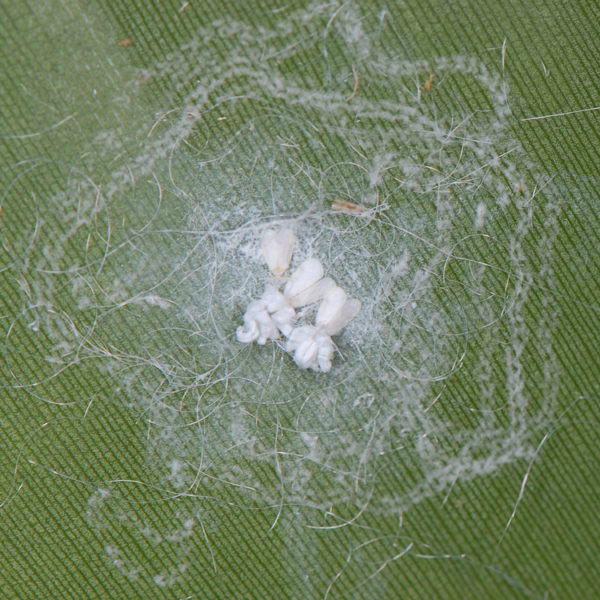Spiraling Whiteflies in Florida
Spiraling Whitefly Facts
Spiraling White Fly are small, winged insects that belong to the Order Hemiptera which also includes aphids, scales, and mealybugs.
These insects typically feed on the underside of leaves with their “needle-like” mouthparts. Whiteflies can seriously injure host plants by sucking nutrients from the plant causing wilting, yellowing, stunting, leaf drop, or even death. There are more than 75 different whiteflies reported in Florida.
Often, when new pests arrive, they can reach very high populations and can be extremely damaging. It is not uncommon, however, that after several years, the impact is greatly reduced. Although it may be necessary to use insecticides for this pest, it is very important to understand the importance of natural enemies and the need to focus on long‐term, biologically based management.
You must monitor plants for early signs of an infestation because it will be easier to manage the pest before it builds to high populations and causes major damage. If you have an infestation on a tree, be sure to search nearby trees as well because this whitefly feeds on many types of trees.
You may achieve excellent control with one of the methods listed below, but remember the white, waxy material and the sooty mold on the plant will take time to wear off unless physically washed off.
Washing plants off with water can be an effective tool to help manage whiteflies for small infestations or small plants. But, for it to be effective, you must remove the immature stages and eggs from the leaves with the wash.
Using a horticultural oil or insecticidal soap can also help control this pest. These types of products are strictly contact so thorough coverage of the infested leaves is required. Typically, several applications are required 7‐10 days apart. Be careful about using these types of products under high temperatures because they can cause damage to plants.
Contact insecticides are typically sprayed on the foliage or other infested parts of the plant or in the soil for soil‐dwelling insects. Depending on the insecticide, either the insect must come into contact with the insecticide or must feed on the plant with the insecticide. Spray coverage must be thorough to get the best results, particularly in cases like this when the insect is primarily on the underside of the leaves. In general, foliar sprays are active for a few weeks and usually require more than one application. However, some of these products can be very useful for quick knockdown which can be very important with bad infestations.
